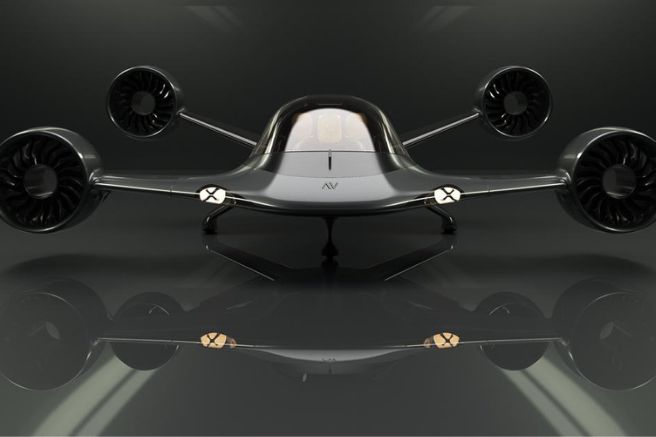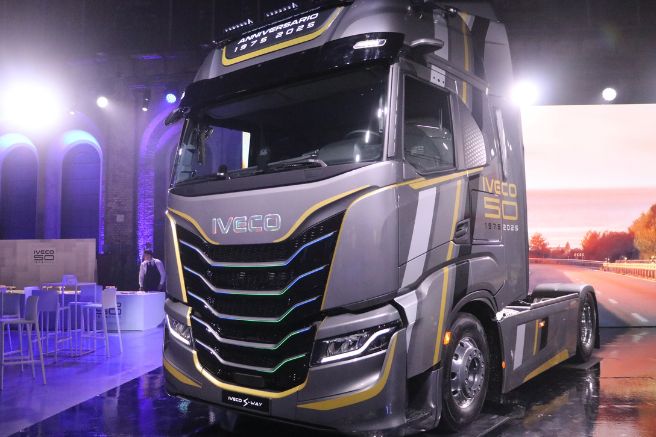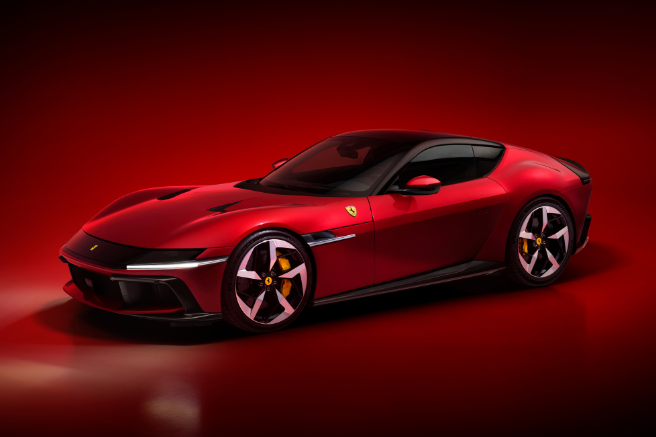
There is an inextricable link between Ferrari and 12-cylinder engines. The V12 mechanical architecture represents the founding act of the Maranello company and has symbolized its motoring DNA for 77 years. Precisely for this reason, “12Cilindri” today becomes the name of a new two-seater sedan created to pay homage to the history of the Cavallino, giving the fashions and trends currently in vogue in the super sports car segment.
Contrary to what is proposed by all the most prestigious brands, Ferrari has deliberately avoided any form of electrification to maintain unaltered the mechanical purity offered by the naturally aspirated V12 engines mounted in a central-front position, traditionally recognized as the maximum engineering expression of endothermic engines thanks to their perfect balancing which ensures the almost total absence of vibrations and a fluid and continuous torque delivery. An unconventional choice made by the Maranello technicians, therefore, making the new Ferrari berlinetta the only super sports car equipped with a naturally aspirated V12 on the market. Obviously profoundly renewed to ensure the highest standards of efficiency and performance, with the maximum power raised to 830 horsepower and the rotation speed brought up to nine thousand and 500 rpm through work aimed at reducing the weight and inertia of the components compared to the unit which equips the “812 Superfast” version.
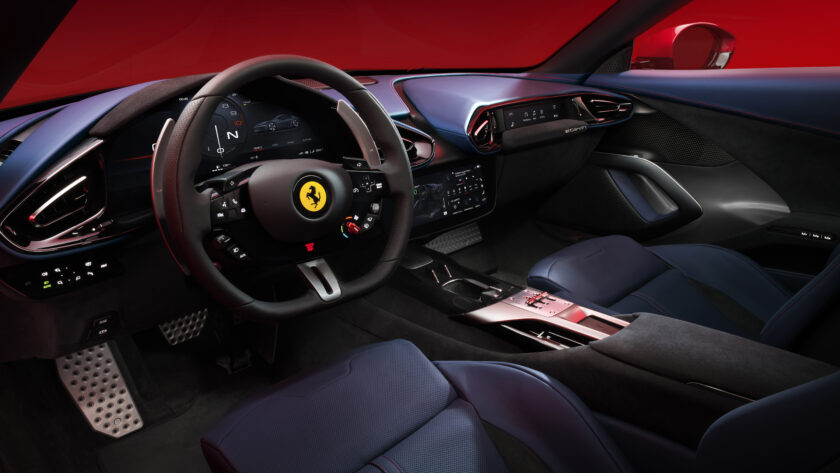
In this perspective, the renewed “F140Hd” boasts connecting rods made of titanium, a material that guarantees a mass saving of 40 percent compared to steel, just as a special aluminum alloy was used for the pistons aimed at also ensuring an increase of resistance, while the crankshaft has benefited from a three percent reduction in weight and new balancing.
The opening and closing of the valves is also managed by a sliding finger, a racing-derived solution adapted for the occasion with the aim of reducing the translating mass and having more high-performance lift profiles. The finger, made of steel coated with diamond-like carbon, uses a hydraulic tappet as a pivot for movement while the cam is designed to optimize torque delivery even at low speeds to offer a continuous and immediate response to the stresses of the engine. ‘accelerator.
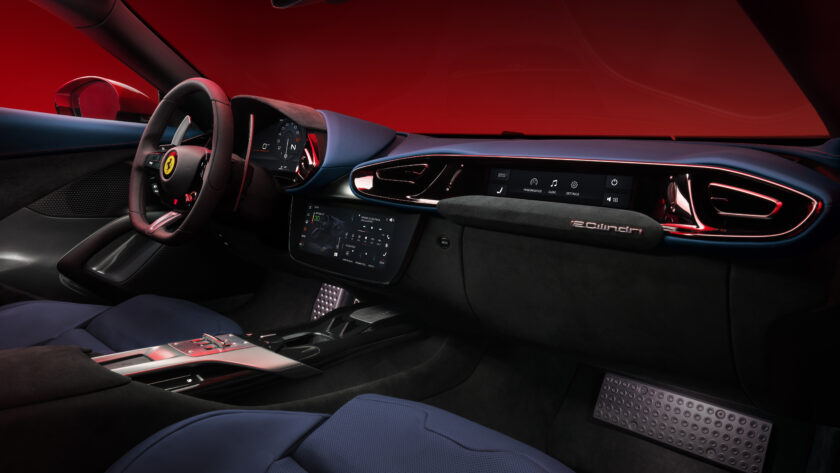
To ensure maximum thermodynamic efficiency at high speeds, instead, there is a more compact intake lung compared to the previous generation V12 and a variable geometry trumpet system which continuously modifies the length of the intake duct, adapting it to the engine rotation speed to maximize cylinder filling.
The latter objective is also achieved by a software strategy, used for the first time on a naturally aspirated engine, capable of modifying the maximum torque available depending on the gear engaged, so as to make the driver perceive a linear and progressive thrust as the engine grows. of the transmission ratio. It is therefore the driving pleasure that benefits, also thanks to the presence of a torque curve control system called “Ats”, “Aspirated Torque Shaping”, which helps to optimize the delivery in third and fourth gear so as to improve perception of the shape of the curve itself, but without this having a negative impact on the acceleration level. Thus configured and operating in conjunction with an eight-speed dual clutch automatic transmission, the renewed “F140Hd” allows “12Cilindri” to move the car with the fluidity almost of an electric motor but with a determination that gives rise to a sprint from stopped at one hundred kilometers/hour in two seconds and nine tenths and at a maximum speed of over 340 per hour. Performance also induced by active aerodynamics which allows the car to assume two configurations, called “Ld”, “Low Drag”, and “Hd”, “High Downforce”.
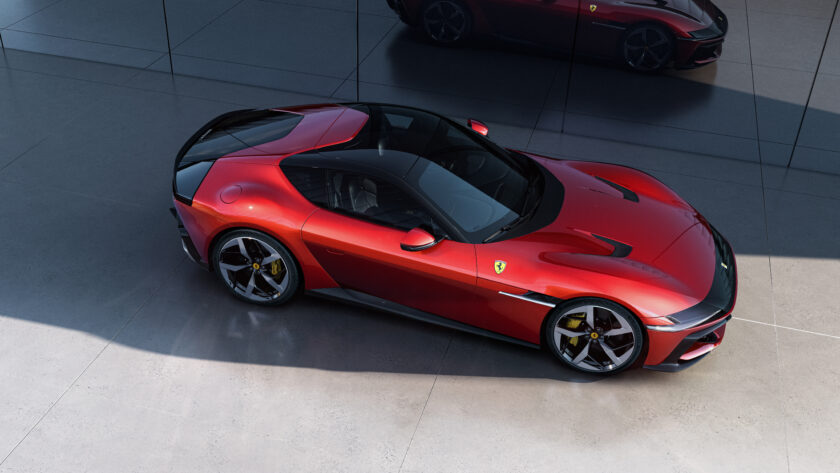
In the “Ld” position the mobile elements are naturally aligned with the body so that the air flows over them, therefore making them invisible to the flow with their movement which depends on the longitudinal and transversal accelerations of the car. In the “HD” configuration, however, the elements generate the maximum vertical load to ensure optimal aerodynamic balance, but without weighing down a design centered on simple and harmonious lines that express a sober sportiness destined to evolve the stylistic codes of the previous Ferraris equipped with V12 engines.
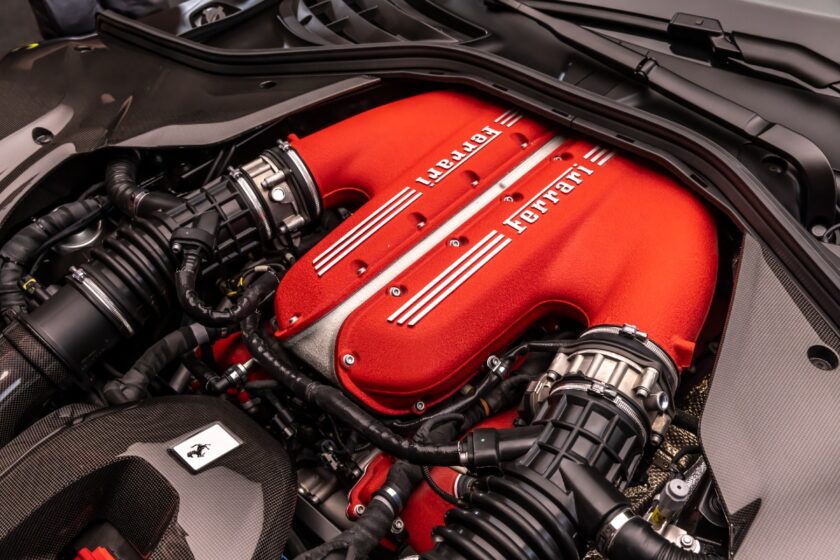
It is to be read in this light that the front offers light clusters wrapped in a single and almost sculptural band, just as the side exploits the language of minimalism, obtained through smooth and geometric wheel arches that integrate into the union between the bonnet and the front wheel arches, while behind the mobile aerodynamic surfaces merge with the rear window to create a truncated tail effect which gives dynamism to the car, to the point of making it seem constantly ready to sprint. Likewise, the interiors blend elegance, minimalism and technology, evolving the dual cockpit concept that appeared on the “Roma” and “Purosangue” models to enrich it with three displays, the first of which is 15 inches and six placed in front of the driver.
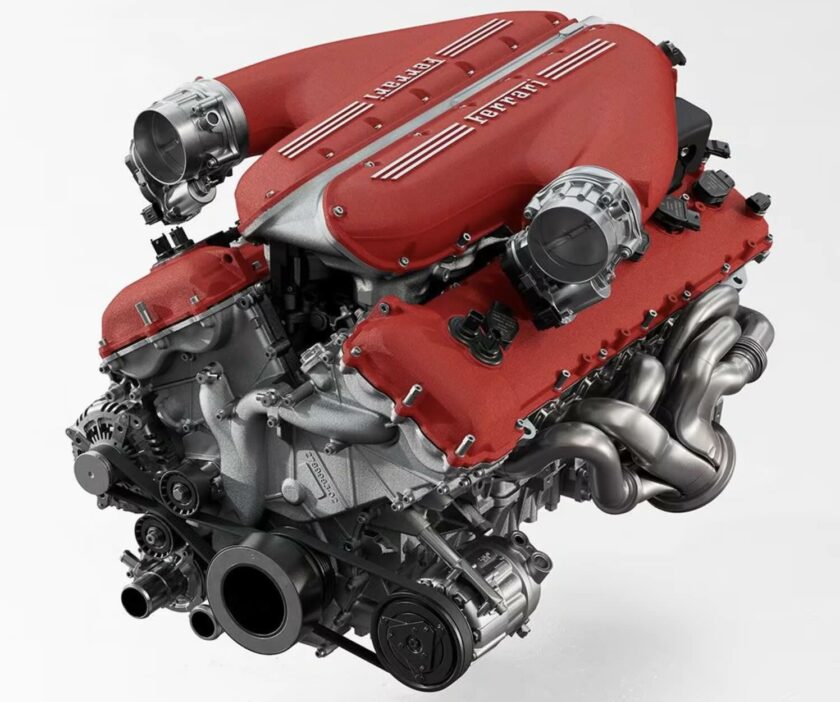
Centrally there is a ten-inch screen dedicated to infotainment, while a further almost nine-inch display reserved for the passenger also allows the latter to enjoy an immersive user experience.
Specially designed
The renewal of the V12 “F140Hd” led to the need to redesign the car’s cooling system by optimizing the seven vents present on the front floor. In particular, the space between the longitudinal elements of the frame is dedicated to the engine water radiator and the air conditioning circuit condenser, served by the central opening, while the oil radiator is divided into two elements positioned in front of the front wheels.
The side intakes are in turn divided into two, with the external part dedicated to cooling the engine oil radiator, while the internal part is dedicated to cooling the braking system. The cooling duct is also fed by two access ports, one between the radiator inlets and the other on the lower part of the front splitter, while the lateral inlets are framed by an “L” shaped element which has the purpose of maximizing the flow rate inside the mouth and, at the same time, to correctly direct the flow along the side. The air in the engine compartment also finds an outlet through two vents on the bonnet which reduce overpressure, a solution which, in addition to improving cooling efficiency, has also allowed the openings on the bottom to be reduced, so as to maximize the generation of vertical load.
Torsional rigidity also improved
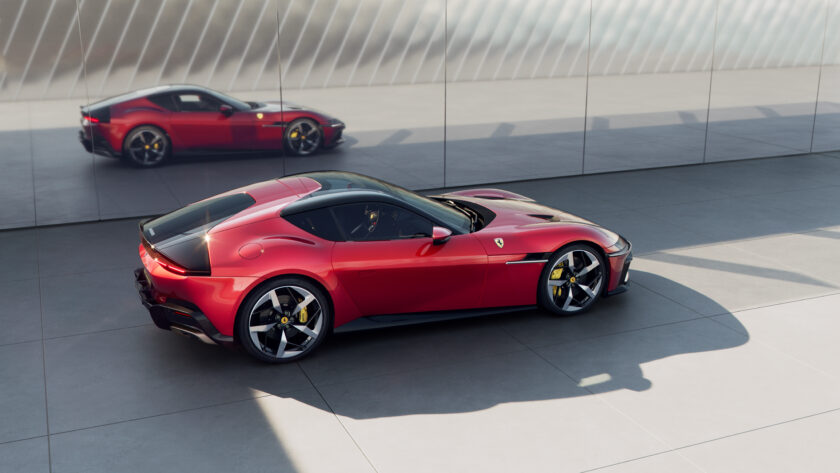
The chassis of the “12Cilindri” berlinetta is not borrowed from the “812 Superfast” model that the new model replaces in the price list, but is completely new. Shorter than 200 millimetres, it is characterized by a geometry of the cast components specifically designed to guarantee both mass containment and greater torsional rigidity, the latter objective also achieved through a cleaning of the load lines which made it possible to improve resistance to equal weight compared to previous Ferrari twelve-cylinder applications. The result is a 15 percent increase in torsional rigidity compared to the past, which guarantees more predictable dynamic behavior of the structure and a consequent benefit for the suspensions.
Title: Ferrari “12 Cylinders”, 830 horsepower maximum power
Translation with Google

